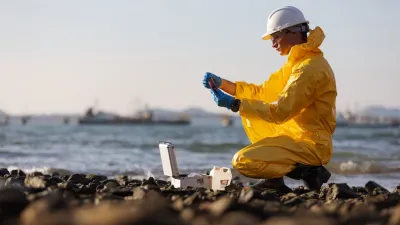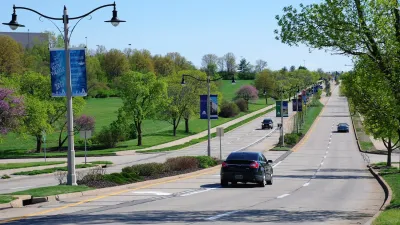The rise in childhood obesity and diabetes has been linked to declining numbers of children who walk or bike to school. In addition, new traffic accident data shows that being driven to school is also a serious health threat.
"Forty years ago, half of all students walked or bicycled to school. Today, fewer than 15 percent travel on their own steam. One-quarter take buses, and about 60 percent are transported in private automobiles, usually driven by a parent or, sometimes, a teenager."
"The change was primarily motivated by parents' safety concerns - a desire to protect their children from traffic hazards and predators. But it has had several unfortunate consequences. Children's lives have become far more sedentary. They are fatter than ever and at greater risk of developing hypertension, diabetes and heart disease at young ages."
"With more children being driven to school, traffic congestion has mushroomed. That has increased stress to drivers and risks to pedestrians and cyclists, as well as air pollution, especially in and around schools. Parents who drive their children to school make up about a quarter of morning commuters. More traffic also means more vehicular accidents, endangering the lives of children and the adults who drive them. It has become a vicious cycle that must be broken, and soon."
"The American Academy of Pediatrics' statistics on injuries and fatalities suggest that being driven to school in a passenger vehicle is by far the most dangerous way to get there, and riding in a school bus is the safest. Seventy-five percent of the fatalities and 84 percent of the injuries occur in passenger vehicles, but just 2 percent of student deaths and 4 percent of injuries result from travel by school bus."
FULL STORY: Turning the Ride to School Into a Walk

Planetizen Federal Action Tracker
A weekly monitor of how Trump’s orders and actions are impacting planners and planning in America.

USGS Water Science Centers Targeted for Closure
If their work is suspended, states could lose a valuable resource for monitoring, understanding, and managing water resources.

End Human Sacrifices to the Demanding Gods of Automobile Dependency and Sprawl
The U.S. has much higher traffic fatality rates than peer countries due to automobile dependency and sprawl. Better planning can reduce these human sacrifices.

Seattle Transit Asked to Clarify Pet Policy
A major dog park near a new light rail stop is prompting calls to update and clarify rules for bringing pets on Seattle-area transit systems.

Oregon Bill Would End Bans on Manufactured Housing
The bill would prevent new developments from prohibiting mobile homes and modular housing.

Nashville Doesn’t Renew Bike Share Contract, Citing Lost Federal Funding
The city’s bike share system, operated by BCycle, could stop operating if the city doesn’t find a new source of funding.
Urban Design for Planners 1: Software Tools
This six-course series explores essential urban design concepts using open source software and equips planners with the tools they need to participate fully in the urban design process.
Planning for Universal Design
Learn the tools for implementing Universal Design in planning regulations.
Tyler Technologies
New York City School Construction Authority
Village of Glen Ellyn
Transportation Research & Education Center (TREC) at Portland State University
Chaddick Institute at DePaul University
Institute for Housing and Urban Development Studies (IHS)
Regional Transportation Commission of Southern Nevada
Toledo-Lucas County Plan Commissions


























